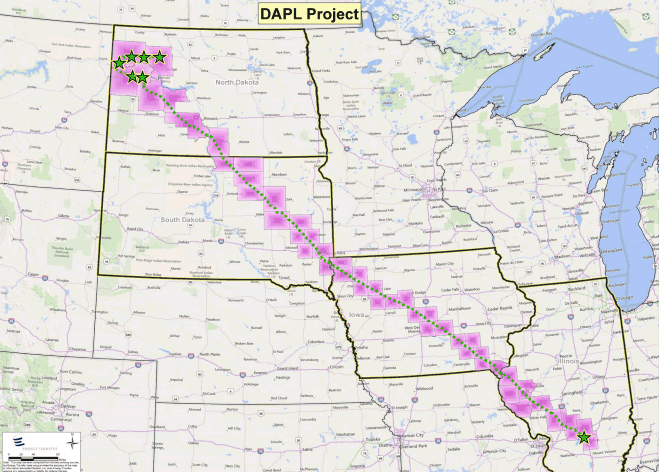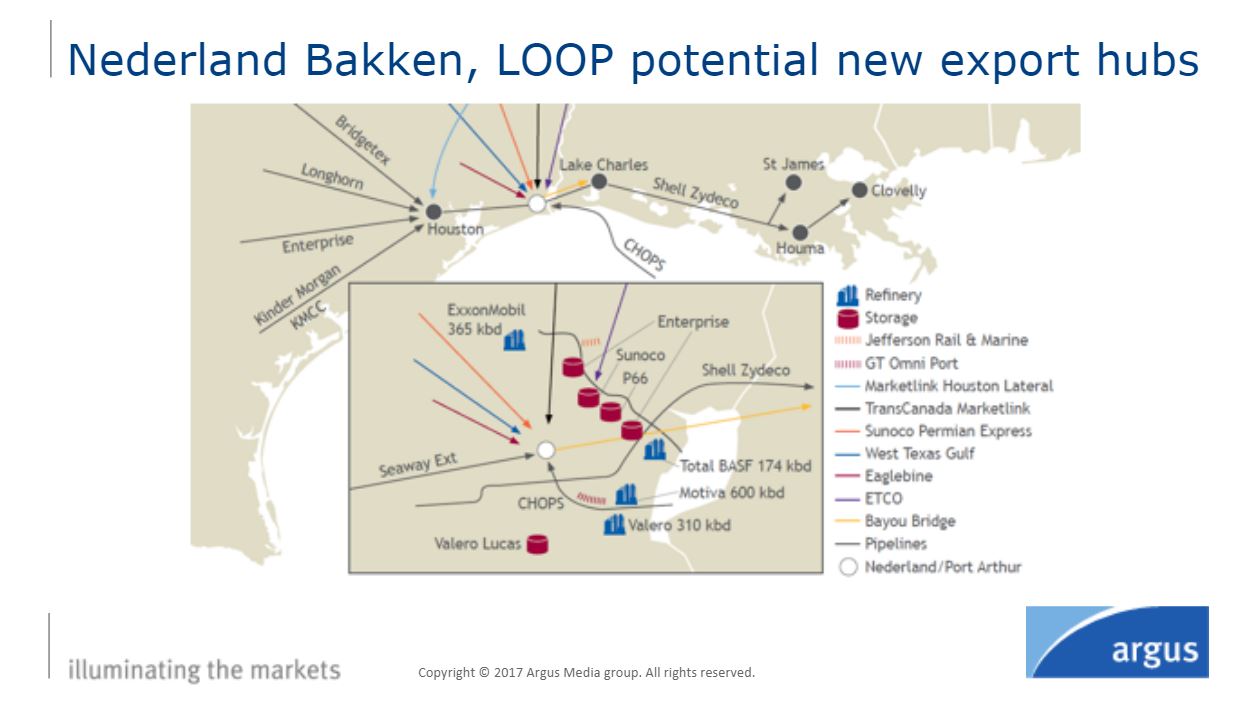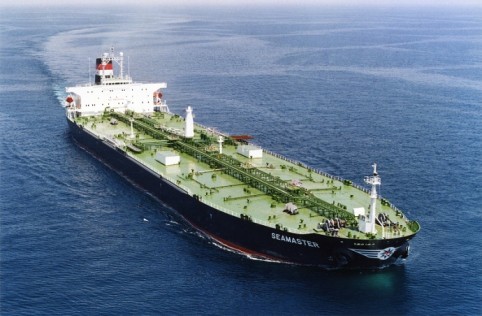Demand for Bakken oil: Bakken appears to be emerging as a new export grade of crude
In a webinar hosted by Argus Media this week, Argus VP Jeff Kralowetz said something interesting with respect to his company’s analysis of the various crude oil grades and exports coming out of the U.S.–Bakken oil in particular.
“We’ve seen pretty dramatic growth in the production of light-type oil from shale reserves, particularly in West Texas Permian, South Texas Eagle Ford and North Dakota’s Bakken formation. More liquid markets are going to be attractive to the folks who come into the Gulf Coast to buy on an F.O.B. basis,” Kralowetz said.
“The industry is spending billions of dollars to connect the new shale crude production to takeaway lines and [pipelines] to the coast. Probably the most well-known bit of infrastructure added this year was the Dakota Access pipeline—DAPL—which takes crude from North Dakota to Patoka, Illinois, and then through an extension to the Phillips 66 Beaumont and Nederland terminals in east Texas on the coast.

“We think that Bakken could well become a fairly robust new export grade within the next couple of months. Our market team is already getting trades of spot Bakken being traded at Nederland and Beaumont reported to us, and we think within the next couple of months we will be able to initiate coverage there,” Kralowetz said.

Why a Bakken grade: consistent quality and large volume
“It’s a consistent quality grade which buyers are looking for and there is a large volume; so the liquidity of this new market could be very strong from very early days. … We think it’s very likely we’ll be able to launch a Bakken assessment at Nederland within the next few months.
Ships out of Nederland, Texas via Aframax tankers
Nederland is served by several docks on a 40-foot draft waterway, so you can’t get a VLCC in there, but it has already been used multiple times to load Aframax [tankers] which then, in many cases, upload to a VLCC loitering off the coast,” Kralowetz said.
Aframax is a medium-sized crude tanker with a dead weight tonnage ranging between 80,000 and 120,000, according to data from Maritime Connector. The much larger VLCC or Very Large Crude Carriers and ULCC or Ultra Large Crude Carriers are sized in excess of 250,000 dead weight tonnage. The smaller Aframax tankers which can dock to load from Nederland have a cargo carrying capacity between 70,000 and 100,000 metric tonnes.
The average cargo carrying capacity of Aframax is approximately 750,000 barrels, according to Maritime Connector.








